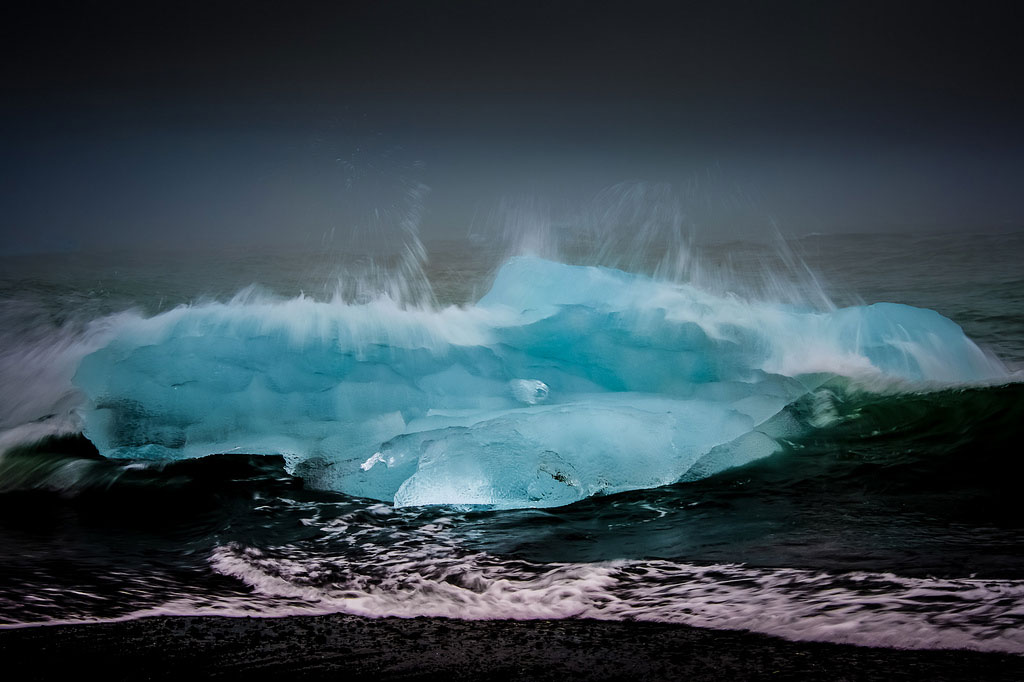
Photo source: ©© Howard Ignatus
Excerpts;
The Greenland Ice Sheet is a 1.7 million-square-kilometer, 2-mile thick layer of ice that covers Greenland. Its fate is inextricably linked to our global climate system.
In the last 40 years, ice loss from the Greenland Ice Sheet increased four-fold contributing to one-quarter of global sea level rise. Some of the increased melting at the surface of the ice sheet is due to a warmer atmosphere, but the ocean’s role in driving ice loss largely remains a mystery.
Research by scientists at Woods Hole Oceanographic Institution (WHOI) and the Univ. of Oregon sheds new light on the connection between the ocean and Greenland’s outlet glaciers, and provides important data for future estimates of how fast the ice sheet will melt and how much mass will be lost. The study was published today in Nature Geosciences.
“Over the past few decades, many glaciers that drain the Greenland Ice Sheet have accelerated, thinned and retreated,” said the study’s lead author, Rebecca Jackson, a graduate student in the MIT-WHOI joint program in oceanography. “Scientists have noticed a link between glacier behavior and warming waters off the coast of Greenland, but we have very few direct measurements of ocean waters near the glaciers or at what time scales they vary, which are needed to understand what’s happening there.”
Currently, scientists think that the accelerated rate of ice sheet melt might be due to warmer ocean waters melting on the underside of the ice, where the glaciers extend into the ocean. Little, however, is known about this “submarine melting” – it has not been directly measured at any of Greenland’s major outlet glaciers, and scientists have limited information about the ocean temperature or circulation near the glaciers, which, they think, will impact the melt rate…









